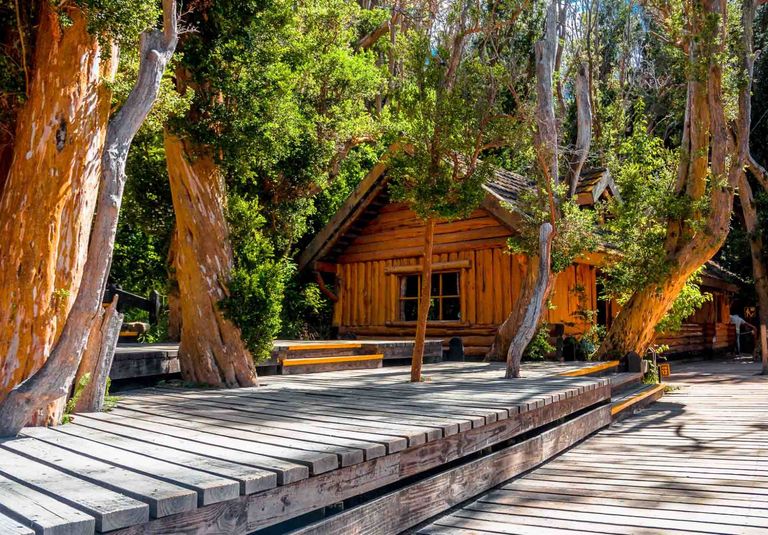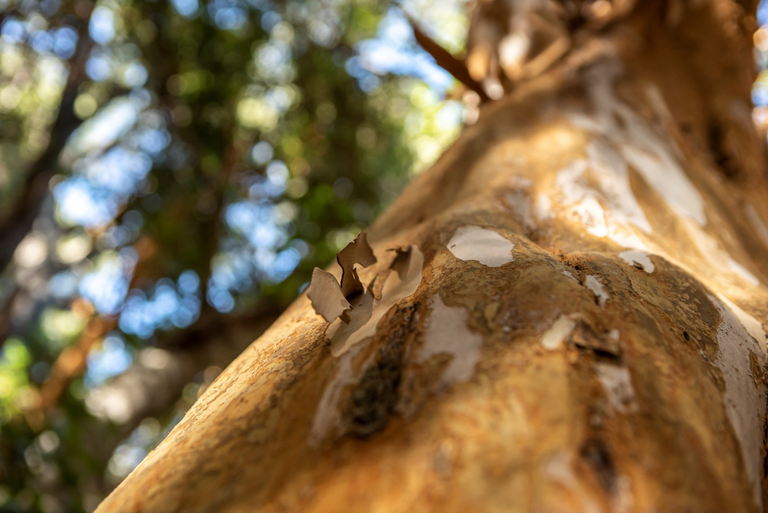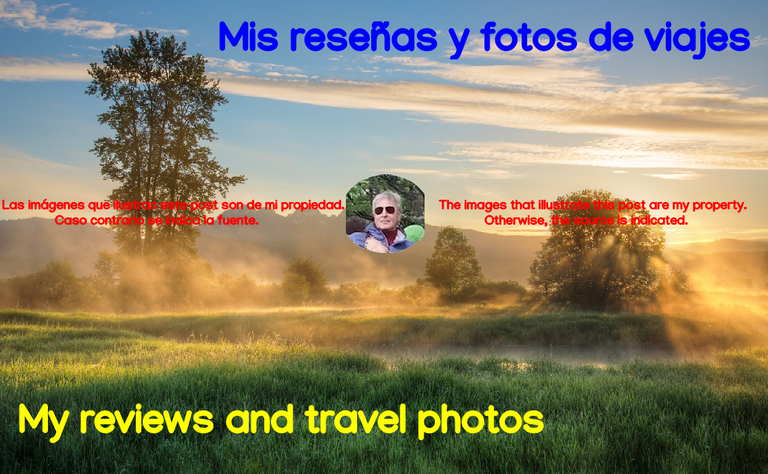
Los Arrayanes National Park is a nature reserve located in the Los Lagos department of the Argentine province of Neuquén; it occupies the 1,753 ha of the Quetrihué peninsula, on the northern shore of Lake Nahuel Huapi.

Since 1934, the territory has been under the protection of the National Parks Administration, and until 1971 it was part of the Nahuel Huapi National Park; at that time it was decided to give it an autonomous entity due to the importance of the forest formation that it houses at its southern end, composed exclusively of arrayanes (Luma apiculata), a tree from the myrtaceae family with a showy golden bark and slow growth.

The park exhibits a sample of the Patagonian forest ecoregion, where semi-deciduous species predominate, alternating with peat bogs whose extension increases in more southern latitudes.

The climate, only slightly tempered by the influence of the lakes, is cold and humid, with strong and constant westerly winds; the valley in which it is located is of glacial origin, and the Andes mountain range rises to the west. The wettest season is winter; rainfall decreases as you move away from the mountain range, from 4,000 mm per year in Puerto Blest to 500 on the coast of the Limay River.

The relatively small size of the park restricts the variety of species present; in the vicinity of the lake there is a forest of southern myrtle (called quetri or temu in Mapudungun), and next to it other evergreen species, especially coihue (Nothofagus dombeyi). The high-altitude vegetation also includes ñires (Nothofagus antarctica), Guaitecas cypresses (Pilgerodendron uviferum) and Cordillera cypresses (Austrocedrus chilensis), Lomatia hirsuta, Laureliopsis philippiana, as well as smaller species such as Myrceugenia spp., Embothrium coccineum or Peumus boldus. The undergrowth is mainly made up of maqui (Aristotelia chilensis and A. maqui) and colihue (Chusquea culeu).

The bird life is rich, and includes both aquatic species, such as the imperial cormorant (Phalacrocorax atriceps), which nests on the neighbouring islands, and the Andean goose (Chloephaga melanoptera), as well as forest dwellers such as the chucaos (Scelorchilus rubecula), several species of woodpeckers (Campephilus spp.), and the rayaditos (Aphrastura spinicauda).

Also found near the water is the heavily protected huillín, the Patagonian river otter (Lutra provocax). Forest species are difficult to spot due to their elusive behaviour; they include the monito de monte (Dromiciops gliroides) – which, despite its name, is not a primate but a small marsupial – the American red fox (Pseudalopex culpaeus), the American wildcat (Oncifelis geoffroyii) and one of the smallest artiodactyls, the pudú (Pudu puda).

El Parque Nacional Los Arrayanes es una reserva natural ubicada en el departamento Los Lagos de la provincia argentina de Neuquén; ocupa las 1753 ha de la península de Quetrihué, sobre la ribera norte del lago Nahuel Huapi.

Desde 1934 el territorio se encuentra bajo protección de la Administración de Parques Nacionales, formando hasta 1971 parte del Parque Nacional Nahuel Huapi; en esta fecha se decidió darle entidad autónoma por la importancia de la formación boscosa que alberga en su extremo sur, compuesta en exclusiva de arrayanes (Luma apiculata), un árbol de la familia de las mirtáceas de vistosa corteza color dorado y lento crecimiento.

El parque exhibe una muestra de la ecorregión del bosque patagónico, en el que predominan las especies semidesiduas, alternadas con turberas cuya extensión crece en latitudes más australes.

El clima, sólo ligeramente atemperado por la influencia lacustre, es frío y húmedo, con intensos y constantes vientos del Oeste; el valle en que se ubica es de origen glaciar, y hacia el Oeste se levanta la cordillera de los Andes. La estación más húmeda es el invierno; las precipitaciones decrecen al alejarse de la cordillera, desde los 4.000 mm anuales en Puerto Blest a 500 en la costa del río Limay.

La extensión relativamente reducida del parque restringe la variedad de especies presentes; en las inmediaciones del lago se encuentra el bosque de arrayanes australes (llamados en mapudungun quetri o temu), y junto a éste otras especies perennifolias, en especial el coihue (Nothofagus dombeyi). La vegetación de altura incluye también ñires (Nothofagus antarctica), cipreses de las Guaitecas (Pilgerodendron uviferum) y de la Cordillera (Austrocedrus chilensis), radales (Lomatia hirsuta), huahuanes (Laureliopsis philippiana), así como especies de menor alzada como la patagua (Myrceugenia spp.), el notro (Embothrium coccineum) o el boldo (Peumus boldus). El sotobosque está formado sobre todo por maqui (Aristotelia chilensis y A. maqui) y colihue (Chusquea culeu).

La fauna avícola es rica, e incluye tanto especies de hábito acuático, como el cormorán imperial (Phalacrocorax atriceps), que anida en las islas vecinas, y el cauquén huallata o ganso andino (Chloephaga melanoptera), como habitantes del bosque como los chucaos (Scelorchilus rubecula), varias especies de pájaros carpinteros (Campephilus spp.), y los rayaditos (Aphrastura spinicauda).

Junto al agua también se encuentra al fuertemente protegido huillín, el lobito de río patagónico (Lutra provocax). Las especies del bosque resultan de difícil avistaje debido a su comportamiento huidizo; incluyen al monito de monte (Dromiciops gliroides) —que, pese a su nombre, no es un primate, sino un pequeño marsupial—, el zorro rojo americano (Pseudalopex culpaeus), el gato montés americano (Oncifelis geoffroyii) y uno de los artiodáctilos más pequeños, el pudú (Pudu puda).

Source images / Fuente imágenes Parque Nacional Los Arrayanes.


Sources consulted (my property) for the preparation of this article. Some paragraphs may be reproduced textually.
Fuentes consultadas (de mi propiedad) para la elaboración del presente artículo. Algunos párrafos pueden estar reproducidos textualmente.
| Argentina Discovery. |  |
|---|---|
| Galería Fotográfica de Argentina. |  |
| Viaggio in Argentina. |  |
| Patagonia Express. |  |
